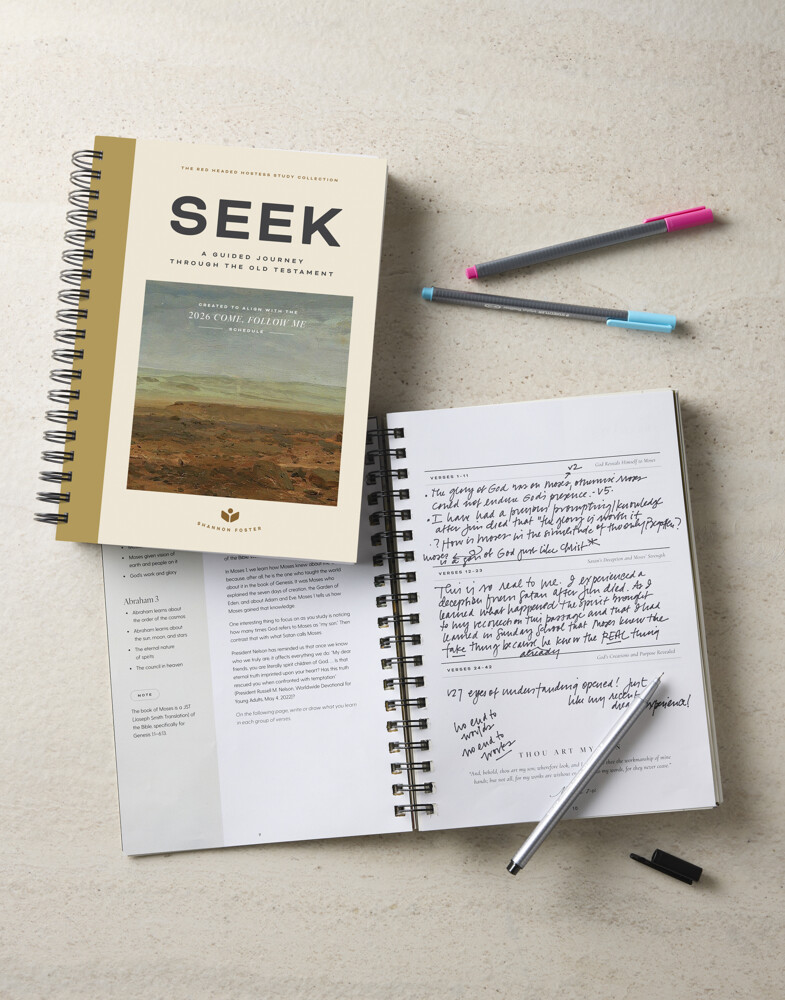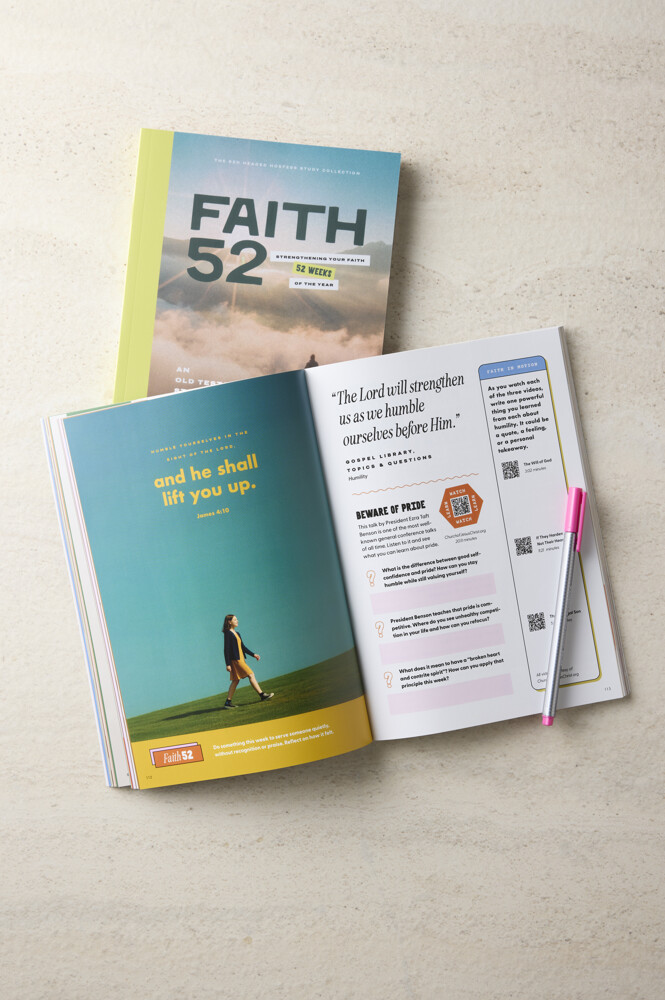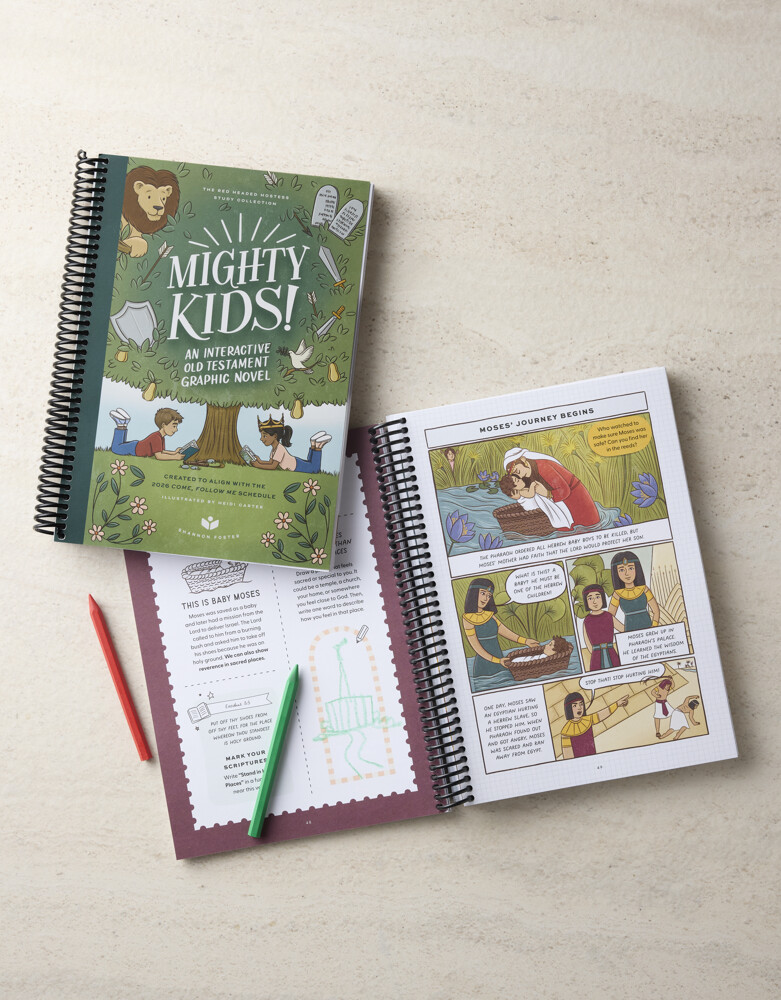Shannon Foster was a seminary teacher for 13 years before starting her scripture study blog, the Red Headed Hostess. She taught her students how to drink deeply from the “living water” of the scriptures by encouraging them to slow down and write what they were learning.
On an episode of the Magnify podcast, Shannon elaborates on how writing during your scripture study can help you soak up the gospel “line upon line” and open the door to new knowledge. Read more about her recommended process below.
1. Write What’s Happening
For those who want to start scripture journaling, Shannon suggests writing down the story that’s happening as you read.
“Maybe just create a timeline,” Shannon says. “Start there. So, ‘this is Nephi going into the wilderness to find ore.’”
Creating a timeline or a bullet list of events will help you keep track of characters and significant (or overlooked) plot points in the scriptures. This method is a great first step in slowing down your study.
2. Write What’s Not Written
Next, Shannon suggests digging a little deeper. Ask yourself, “What’s not written that [I] think might have happened or for sure would’ve happened?”
For instance, consider Nephi traveling into the wilderness to find ore to make tools for building a ship. This surely would’ve been a difficult task. He probably spent hours, if not days, searching for ore he could mine. The ore would’ve been heavy, and Nephi would’ve felt sore and tired.
“[Thinking this way] is just training [us to] slow down,” Shannon says. “What would’ve been frustrating? What would’ve been exhilarating? What would’ve been the hard moments? Just go in and search.”
Using your imagination and writing down your thoughts in this way helps bring the scriptures to life and allows you to see ancient prophets as real people. When you read between the lines of the stories you know well, new thoughts and bits of knowledge may shine through.
3. Draw Pictures and Make Diagrams
Everyone’s brain works differently, so if writing isn’t your thing, try drawing what you learn. You can make comics of scripture stories, sketches of characters, or doodles decorating your favorite verses. Whatever you choose to do, Shannon reminds, “It’s about visualizing and slowing down.”
You can also try making diagrams as another way to orient yourself in the scriptures and slow down your study. Make family trees of scripture characters or trace a posterity line to show what happens when a covenant line stays true. Don’t be afraid to dive in and explore what’s there.
4. Try the “Three Times Rule”
Shannon also recommends the Three Times Rule, which goes as follows:
- Read through a few verses with the goal of understanding the overview of what’s happening.
- Go back and reread, looking up words you don’t understand and even ones you think you do. Try to find the deeper meaning of the passage’s words and phrases. For example, if you’re reading the Bible, look up the Hebrew definition of certain words. If you’re reading the Book of Mormon, use the 1828 Webster’s Dictionary, because it has the meaning of words used at the time of the Book of Mormon’s translation.
- Reread a third time and seek “with real intent” a message for you from the Lord. Because you’ve been digging, deeper insights will come out of these verses that you would’ve otherwise missed.
Normalize the Struggle
Shannon believes that writing down what you learn creates proof that God speaks to you.
“If you need to start by just drawing pictures or writing down what’s happening, it won’t be very long until you are writing down things that are deep wisdom,” she says.
Shannon herself has been able to recognize her chronological spiritual growth within her own scripture journals, characterized by the expanding depth and quality of her insights. This growth didn’t happen in a day but took place over a long period of time.
“‘Line upon line’ learning is how we learn,” she explains. “And if I forget something, I have to relearn it. So, writing things down helps me remember. I can go back and review. …
“The Spirit needs time and space to reveal ‘line upon line’ truth. … I think it’s very important to normalize the struggle. If you don’t understand the words, if you don’t understand Isaiah, if you don’t understand the culture, that is part of the journey.”
Hear more from Shannon on the full episode of Magnify.
More articles for you:
▶ The quote from conference that’s on my mind weeks later
▶ Amazing temple cake helps build spiritual momentum in California
▶ Watch: Apostles reflect on the ‘transcendent’ moment a new prophet is ordained
Guidebooks to Help You Slow Down
You can find guidebooks created by Shannon exclusively at Deseret Book and DeseretBook.com. Read more about the structure and benefits of the adult, teen, and kid guidebooks below.
SEEK, for adults
- A stunning piece of commissioned or licensed artwork
- Insightful background on each section and key historical context
- Simple timelines and “people to know” for deeper understanding
- Guided questions and space to write, reflect, or draw
- Thoughtful prompts to help you slow down and record what the Spirit teaches you
Available exclusively at Deseret Book and DeseretBook.com.
Faith 52, for teens
- Bold artwork, typography, or photography designed to speak to teens
- Maps, timelines, and helpful context to deepen understanding
- Space to write or draw thoughts, impressions, and personal insights
Mighty Kids!
- A graphic novel-style story from the Old Testament
- A scripture-marking activity that helps kids engage directly with the Old Testament
- A hands-on activity for each week
- A weekly focus on a Christlike trait





